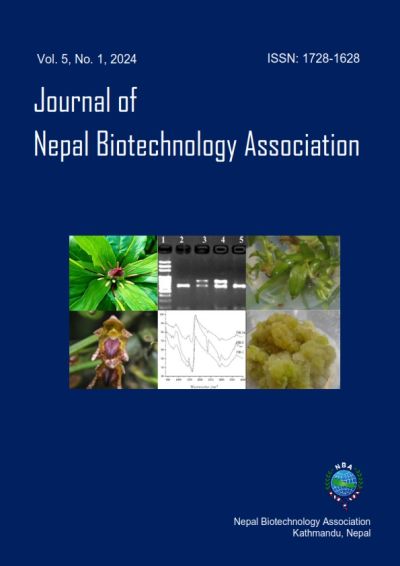Oral Microbial Diversity Among Nepalese Individuals Across Various Geographical Regions
DOI:
https://doi.org/10.3126/jnba.v5i1.63746Keywords:
16S rRNA, Oral bacteria, Oral disease, Oral hygieneAbstract
A comprehensive study encompassed the collection of 153 samples derived from oral patients across 17 diverse locations throughout Nepal. The assortment of samples included extracted teeth, dental plaque, and dental calculus, procured from dental clinics, dental hospitals, and dental camps. Employing six distinct culture media, namely nutrient agar (NA), Muller Hilton agar (MHA), mannitol salt agar (MSA), blood agar (BA), brain heart infusion agar (BHA), and potato dextrose agar (PDA) for potential fungal strains, plates were meticulously incubated at 37°C for 5-7 days. The ensuing bacterial colonies were judiciously isolated, and their morphological and biochemical traits were scrutinized. The microscopic structures of the bacterial cells were examined, considering shape, size, colour, opacity, and texture. Gram-staining was employed, and each colony's biochemical attributes were assessed for protease, pectinase, cellulase, and lipase enzymes. From the 1200 colonies isolated from dental samples, 300 diverse colonies, distinguished by morphological and biochemical characteristics, were chosen for further taxonomic identification. Subsequent sequencing revealed the identification of 60 distinct species within 21 genera of bacterial isolates, including Achromobacter, Bacillus, Chryseobacterium, Citrobacter, Curtobacterium, Enterobacter, Enterococcus, Escherichia, Flavobacterium, Klebsiella, Kocuria, Lyinibacillus, Novosphingobium, Ochrobactrum, Proteus, Pseudomonas, Sporosarcina, Staphylococcus, Stenotrophomonas, Serratia and Streptococcus. The research underscored the presence of various pathogenic bacterial species in oral samples.




